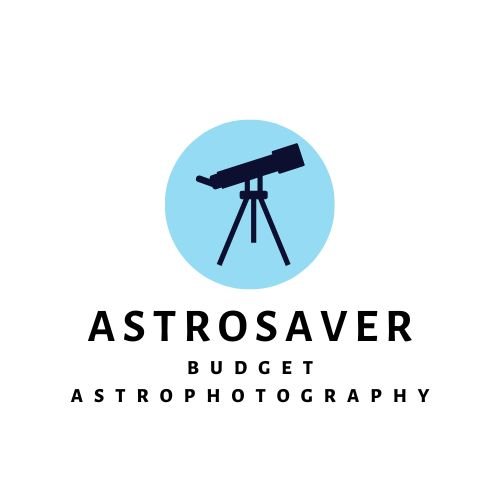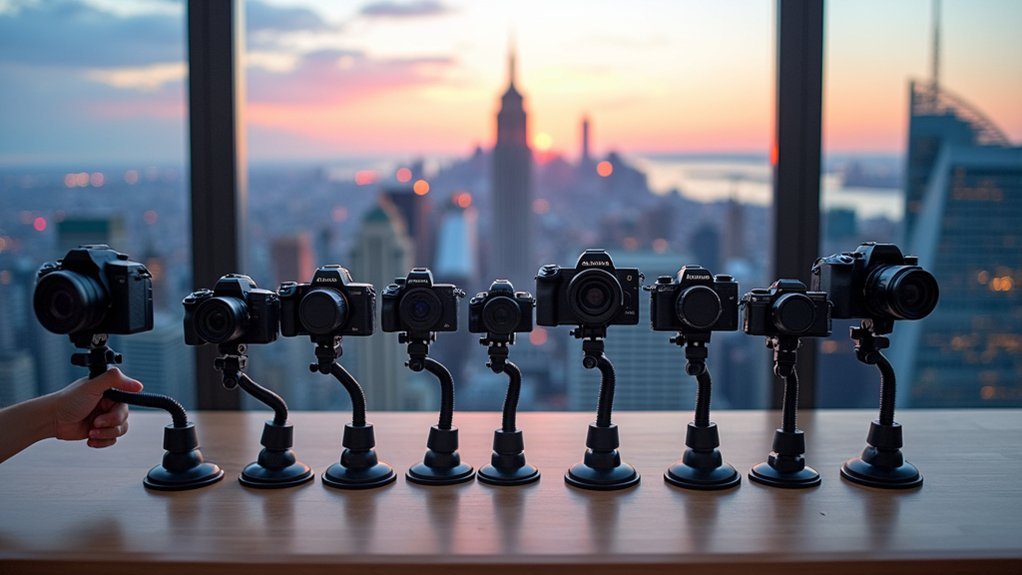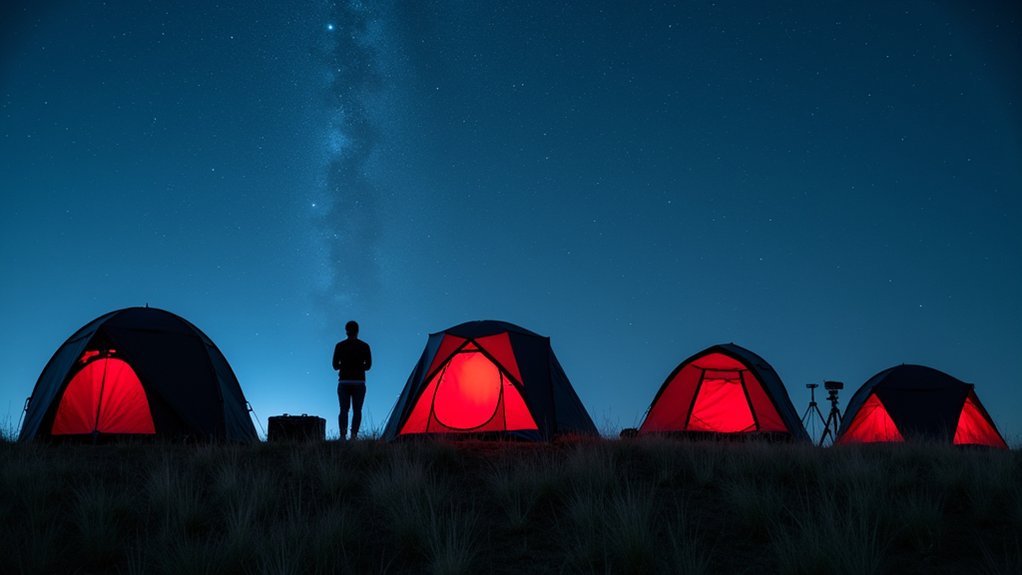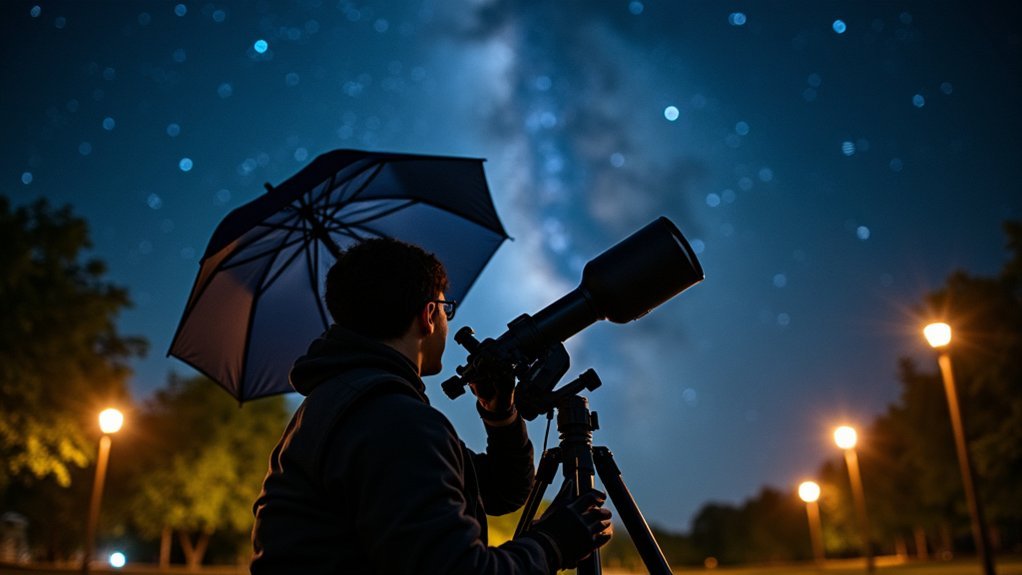For accurate astronomy photo colors, calibrate your monitor with a colorimeter, use PixInsight’s Photometric Color Calibration pre-stretch, stack at least 8 five-minute exposures, apply proper debayering algorithms, subtract calibrated dark frames, incorporate flat fields, neutralize backgrounds, employ G0 star calibration, integrate narrowband data with proper mapping, and use gradient removal tools for light pollution. These proven techniques will transform your cosmic imagery from muddy to magnificent.
10 Best Methods To Color Calibrate Astronomy Photos

When processing astrophotography images, accurate color calibration stands as one of the most challenging yet essential steps toward professional results.
You’ll achieve the most natural colors by using specialized tools like PixInsight’s Photometric Color Calibration, which references known star colors to establish proper balance.
For ideal results, stack at least 8 sub-frames per RGB filter, with exposures of 5 minutes or longer to capture sufficient color data.
Apply your color calibration before stretching images to preserve relationships between color channels.
Color calibration must precede stretching to maintain the delicate balance between channels that defines accurate astrophotography.
If you’re using light pollution filters, be cautious about their effect on color accuracy.
Consider the G0 star method for neutral adjustments in software like Siril or Regim.
Don’t forget to regularly calibrate your monitor with a colorimeter—what looks balanced on your screen should appear natural on others.
Understanding the Basics of Color Science in Astrophotography
To properly apply the color calibration methods mentioned above, you’ll need to grasp the fundamentals of color science specific to astrophotography. Understanding how your camera’s sensor interprets light is essential for achieving accurate representation of celestial objects.
Color balance in astrophotography differs markedly from everyday photography because space objects emit light across various wavelengths that your equipment may capture differently than your eyes perceive. This challenge is compounded by the low signal-to-noise ratio common in deep sky imaging, where faint details can be lost in background noise.
Remember that narrowband filters introduce artificial coloration, requiring special handling during calibration.
Your monitor’s calibration also plays a significant role – even perfectly processed images will appear inaccurate on an uncalibrated display. Regular monitor calibration using colorimeters guarantees what you’re seeing truly represents your data.
Proper Monitor Calibration for Accurate Processing

Although many astrophotographers focus primarily on camera settings and processing techniques, your monitor’s calibration serves as the foundation for all color decisions you’ll make. Without proper display calibration, you’re fundamentally editing your cosmic captures while wearing tinted glasses.
| Calibration Aspect | Impact on Astrophotography |
|---|---|
| Color Accuracy | Guarantees nebula colors and star temperatures appear true-to-life |
| Brightness/Gamma | Reveals hidden background details that might be lost on dim displays |
| Contrast Settings | Prevents overprocessing of dynamic range in galaxy details |
For best results, use a colorimeter like Spyder5 in a controlled lighting environment. Windows 10’s built-in Display Color Calibration tool can help if specialized equipment isn’t available. Remember to recalibrate regularly—your monitor’s color accuracy drifts over time, potentially compromising the quality of your celestial masterpieces.
Photometric Color Calibration Using Star Reference Data
Unlike basic color adjustments that rely on subjective perception, photometric color calibration anchors your image processing in scientific star data.
This method leverages known star colors as reference points to accurately adjust your image’s color balance.
For ideal results, you’ll want to implement photometric color calibration before stretching your image. This preserves color data integrity throughout your processing workflow.
Software like PixInsight offers specialized tools that identify stars with established spectral types, effectively correcting issues such as the excess green commonly introduced by Bayer matrix filters.
Managing Light Pollution in Processing Workflow

When confronting the challenge of light pollution in astrophotography, you’ll need specialized techniques that go beyond standard color correction.
Light pollution introduces unwanted color casts that can completely distort your celestial subjects’ natural appearance.
To effectively manage light pollution during post processing:
- Subtract properly calibrated dark frames to remove the baseline light pollution impact before beginning color calibration.
- Apply gradient removal tools to address uneven brightness patterns across your image frame.
- Incorporate flat field images into your workflow to correct for both light pollution and sensor irregularities.
- Utilize specialized software with background color calibration features designed specifically for astrophotography.
Remember that while pollution filters help during capture, they also alter star colors, adding complexity to your post processing workflow.
Balancing these factors is essential for achieving accurate, natural-looking astronomical images.
Bayer Matrix Correction Techniques for One-Shot Color Cameras
The Bayer matrix pattern in one-shot color cameras creates unique challenges for astrophotography, as its uneven distribution of color filters (typically 50% green, 25% red, and 25% blue) often results in greenish color casts that diminish image accuracy.
Uneven Bayer patterns force astrophotographers to battle persistent green color shifts that compromise celestial image fidelity.
To overcome this bias, you’ll need effective debayering algorithms that interpolate missing color information from surrounding pixels. Software like PixInsight offers specialized bayer matrix correction tools that analyze neighboring pixels to reconstruct accurate color images.
The G0 star calibration method helps neutralize color shifts in your raw data, ensuring more balanced results.
For ideal outcomes, combine these calibration methods with multiple well-exposed subs during stacking. This approach strengthens your underlying color data and greatly improves the effectiveness of Bayer correction in your final astronomical images.
Balancing White Point and Background Neutralization

Achieving true-to-life colors in astronomical images depends heavily on properly balancing white points and neutralizing backgrounds. These critical color calibration steps guarantee your images display accurate representations of celestial objects without unwanted color casts.
- Adjust white point first – Use tools like PixInsight’s PCC to make the brightest parts of your image, especially stars, appear neutral rather than tinted.
- Select appropriate background areas – Choose regions without astronomical features for accurate background neutralization.
- Apply neutralization early – Perform background neutralization before stretching or enhancing saturation to maintain color integrity.
- Maintain regular calibration – Calibrate your imaging sensor and manage light pollution to consistently achieve neutral backgrounds.
Remember that proper balancing white point and background neutralization form the foundation for all subsequent processing steps in your astrophotography workflow.
Multi-Frame Stacking for Improved Color Accuracy
You’ll achieve superior color fidelity through precise alignment techniques that register each frame within sub-pixel accuracy, creating seamless integration across multiple exposures.
By stacking at least 8-9 subs per color channel, you’re effectively separating random noise from true signal, revealing subtle color details that would otherwise remain hidden in single exposures.
This stacking process greatly expands your image’s dynamic range, allowing you to capture both faint nebulosity and bright star colors without the clipping issues that plague single-frame photography.
Alignment Precision Techniques
When properly executed, multi-frame stacking transforms ordinary astronomical images into color-accurate representations of celestial objects.
Precise alignment between frames is essential for maintaining color fidelity and detail across your final image.
To achieve ideal alignment precision:
- Use specialized software like Siril or PixInsight that can detect and match star patterns across frames, guaranteeing accurate registration of celestial features.
- Process a minimum of 8-9 sub-exposures per color channel (R,G,B), each with at least 5 minutes integration time.
- Apply calibration frames (flats, darks, bias) to correct for sensor imperfections that can distort color accuracy.
- Validate alignment quality by examining star shapes in your stacked result—perfectly round stars indicate proper stacking alignment.
Proper alignment techniques not only reduce noise but also confirm that subtle color variations are preserved throughout the stacking process.
Noise Reduction Benefits
Multi-frame stacking represents one of the most powerful tools in an astrophotographer’s arsenal for achieving true-to-life color accuracy.
When you stack at least 8 subs for each RGB color channel, you’ll greatly reduce random noise while enhancing the signal-to-noise ratio in your images. This technique effectively suppresses fixed-pattern noise, resulting in cleaner, more vibrant astronomical photographs.
By extending your exposure time to approximately 5 minutes per sub, you’ll capture more light, dramatically improving color depth and detail. The averaging process not only enhances color fidelity but also helps correct unwanted color shifts caused by atmospheric conditions or sensor limitations.
Remember that each frame you add contributes to the overall noise reduction, allowing subtle color nuances to emerge that would otherwise be lost in the noise floor of single exposures.
Dynamic Range Enhancement
The true magnificence of astronomical objects can only be fully realized through expanding your image’s dynamic range, which multi-frame stacking accomplishes masterfully.
When you combine multiple exposures, you’ll capture details across the entire visible spectrum that would be impossible in a single frame.
For ideal color accuracy in your processing workflow:
- Stack a minimum of 8 subs with at least 5-minute exposures for each RGB channel
- Verify proper alignment of all frames before combining to preserve true colors
- Use specialized software like Siril or PixInsight for photometric color calibration
- Apply calibration based on known star colors to achieve scientifically accurate results
This technique doesn’t just reduce noise—it reveals the authentic colors of distant celestial objects by extending your camera’s ability to capture subtle hues across the dynamic range.
Narrowband Data Integration and Color Mapping
Although traditional RGB imaging captures what the human eye would see, narrowband imaging reveals celestial details invisible to natural observation.
When integrating narrowband data, you’ll need to carefully map specific wavelengths to RGB channels—typically assigning H-alpha to red, OIII to green, and SII to blue. This mapping creates a visually appealing representation while preserving structural details.
The Hubble palette (SHO) stands out as a popular color mapping technique that enhances visual impact while maintaining scientific integrity.
Be mindful of background light pollution, which can greatly distort your narrowband colors. Software like PixInsight offers specialized tools for proper calibration and color balancing.
Software-Specific Tools and Techniques for Color Correction

Selecting the right software for color calibration can dramatically improve your astrophotography results, as each program offers unique strengths for different calibration challenges.
Choosing optimal calibration software transforms ordinary astrophotography into spectacular cosmic portraits.
When processing your deep-sky images, consider these specialized tools:
- Siril provides dedicated photometric color calibration that adjusts your images based on known star colors before you begin stretching, making it excellent for beginners.
- PixInsight’s Photometric Color Calibration (PCC) tool stands out for achieving realistic color representation by referencing scientific star data.
- StarTools offers user-friendly color manipulation tools that work by layering non-filtered frames over your stacked results.
- Affinity Photo and GIMP deliver powerful post-processing color adjustment capabilities when you’ve completed initial calibration steps.
For best results, match your color calibration software to your specific imaging workflow and target.
Frequently Asked Questions
How to Color Balance Astrophotography?
To color balance astrophotography, you’ll need to use photometric calibration software like PixInsight, adjust saturation before stretching, employ a ColorChecker for accuracy, manage light pollution, and utilize specialized tools in Siril or StarTools.
What Is the Best Color Temperature for Astrophotography?
You’ll get the best results using color temperatures between 4000K-6000K for astrophotography, with 5000K often providing ideal neutral white balance. Don’t forget to adjust for your specific conditions and light pollution.
How to Color Calibrate Display?
You’ll need a colorimeter like Spyder5 for best results. Run it in dim light, follow the software’s instructions, and save your profile. Windows 10’s built-in calibration tool works for basic adjustments too.
How to Get True Color in Photography?
You’ll get true color in photography by using proper white balance, color calibration tools, color checker charts, and calibrating your monitor. Don’t oversaturate images, and shoot in RAW format for maximum color data.
In Summary
You’ll achieve stunning, scientifically accurate astronomy images when you master these color calibration techniques. Whether you’re working with broadband RGB or narrowband data, proper calibration transforms your raw captures into breathtaking cosmic portraits. Remember, your processing workflow matters just as much as your equipment. Keep practicing these methods, and you’ll soon develop an intuitive feel for bringing out the true colors of the universe.





Leave a Reply